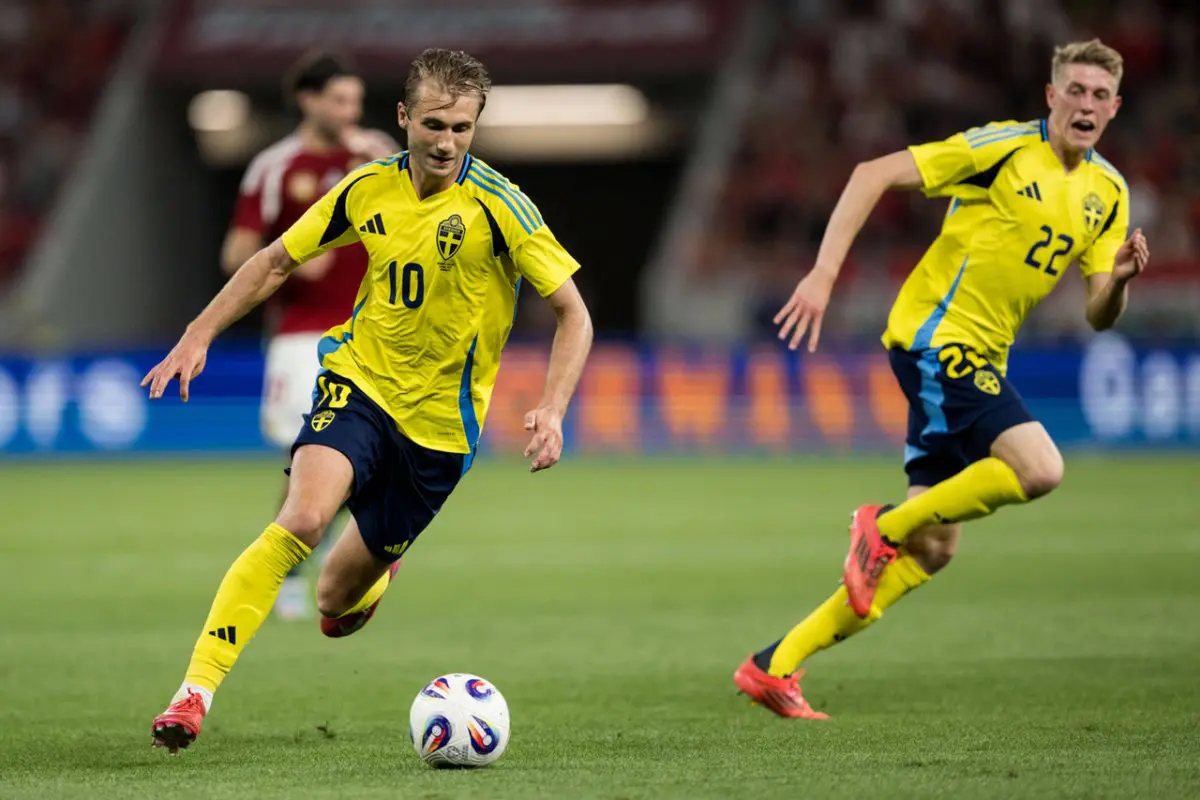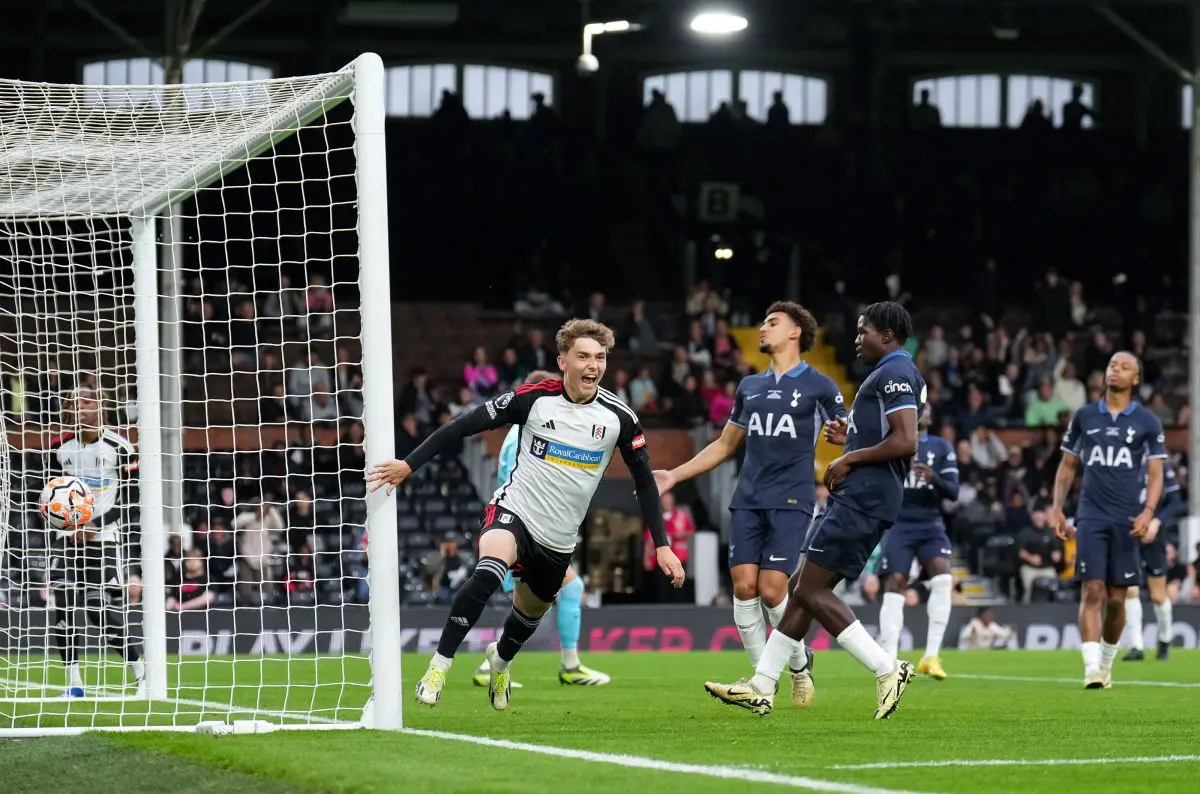Benjamin Nygren’s name is being mentioned with increasing excitement, and with a deal seemingly nearing completion, the club has already confirmed the return of Kieran Tierney, suggesting at least two significant first-team arrivals are lined up for pre-season.
This development will be welcomed by Brendan Rodgers, who has frequently faced the challenge of late arrivals in previous windows, limiting the crucial physical and tactical preparation time before a new campaign.
Meanwhile, Scott Bain looks to be on his way to Falkirk, with Ross Doohan expected to arrive from Aberdeen as his replacement. Celtic are also strengthening depth up front, with Callum Osmand, a 19-year-old Fulham striker, reportedly set to be the new backup for Daizen Maeda and Adam Idah.
What does this mean for Johnny Kenny? That remains to be seen — a loan move or even a permanent departure might be in the cards.
Negotiations are also reportedly underway for Michel-Ange Balikwisha, a winger from Antwerp, with a £5 million fee being discussed. The player’s social media hints at a desire to join, and “it will now just be down to Celtic to agree the fee with his club,” as personal terms appear sorted.
There is cautious optimism among supporters, but history has made them wary — especially with Celtic’s hit-and-miss track record in the market.
The £19.3m Question
Celtic’s summer 2023 window, Brendan Rodgers’ first since returning, was widely seen as a misstep. Ten signings were brought in for a combined £19.3 million, excluding loans. Many of those players were handed long-term contracts. Only Yang Hyun-jun and Paulo Bernardo offered any real return.
Rodgers was not heavily involved in those early decisions: “he had very little to do with the new arrivals and basically was left to work with what he was given.”
Here’s a recap of that window:
Paulo Bernardo, loan from Benfica
Nat Phillips, loan from Liverpool
Luis Palma, £3.5m from Aris Thessaloniki
Gustaf Lagerbielke, £3m from Elfsborg
Maik Nawrocki, £4.3m from Legia Warsaw
Kwon Hyeok-kyu, £1m from Busan I-Park
Yang Hyun-jun, £2m from Gangwon FC
Tomoki Iwata, £1m from Yokohama Marinos
Marco Tilio, £2m from Melbourne City
Odin Thiago Holm, £2.5m from Valerenga
That £19.3m largely consumed Celtic’s income from the Jota sale to Al-Ittihad (£25m), once Benfica’s share was accounted for — with very little to show in return.
Turning the Tide
By January 2024, recruitment seemed more focused. Adam Idah arrived on loan, and Nicolas Kuhn was bought for £2.5m. It wasn’t flashy, but both contributed, unlike many of the 2023 signings. Even the Celtic chairman acknowledged the uninspiring window — and six weeks later, Mark Lawwell stepped down from his role as head of recruitment.
He was replaced by Paul Tisdale, first as a consultant, then officially in October 2024. His influence was quickly felt.
In the summer 2024 window, Celtic generated around £25m from Matt O’Riley’s departure (which could rise to £30m). They spent £32m on eight signings, plus a £1.3m loan fee for Alex Valle. The arrivals included:
Luke McCowan, £1m from Dundee
Arne Engels, £11m from Augsburg
Auston Trusty, £6m from Sheffield United
Alex Valle, loan from Barcelona
Adam Idah, £9.5m from Norwich
Paulo Bernardo, £3.5m from Benfica
Kasper Schmeichel, free from Anderlecht
Viljami Sinisalo, £1m from Aston Villa
All eight contributed to Celtic’s success. Whether universally loved or not, “Celtic at least signed a group of players the manager trusted – and used regularly.”
In the quieter January 2025 window, Kyogo left for Rennes and Alex Valle returned to Barcelona. In came Jeffrey Schlupp, loaned from Crystal Palace, and Jota, who returned from Rennes for £8m. Celtic roughly broke even, and while Kyogo wasn’t directly replaced, “the return of Jota was celebrated and was a good opportunity spotted and executed by the club.”
What’s Changed — And What Hasn’t
Since Rodgers and Tisdale began working together, the recruitment strategy appears improved. Most of the signings since January 2024 have had real impact. But delays in executing deals remain a problem, affecting pre-season plans and costing the club both time and money.
The summer of 2023 still looms large in supporters’ minds, seen as a “wasted transfer fee” after the high of the Jota sale. However, the signs since have been more positive. The manager is now clearly backed and is using the players he’s given — something not true in 2023.
This summer is pivotal. It’s the first full transfer window where Tisdale and Rodgers are working side by side from the outset. It’s easy to see why Tisdale was given the job permanently, and why Lawwell’s appointment in 2023 now appears, in hindsight, ill-judged.
Still, the biggest challenge may lie higher up the chain. “That of course will come down to our CEO and his ability to get deals done and to manage upwards when it comes to a certain significant shareholder.”
Not an easy job — but a vital one if Celtic are to fully modernize their recruitment strategy.
